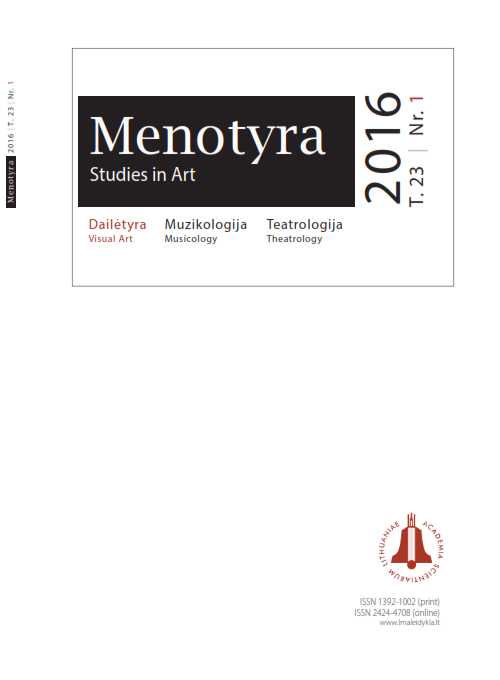Trinapolio trinitorių bažnyčios meninis inventorius ir jo
paveldas
The artistic inventory of the Trinitarians’ Church in Trinapolis and its heritage
Author(s): Regimanta StankevičienėSubject(s): Christian Theology and Religion, Fine Arts / Performing Arts, Architecture, Visual Arts, Theology and Religion
Published by: Lietuvos mokslų akademijos leidykla
Keywords: inventory of the Trinitarians’ Church in Trinapolis; artistic heritage of the Church of Trinapolis; Trinitarian art; Trinitarian Saints; Trinitarian iconography; Friedrich Kwieczor (Quetzor)
Summary/Abstract: Konstantinas Kazimieras Bžostovskis, the bishop of Vilnius, funded the Trinitarians’ Church of the Holy Trinity and the Lord’s Transfiguration in Trinapolis, Vilnius, and consecrated it in 1722. Its altars and the pulpit had been erected until then. However, the consistent data on the decorati- ons and items in the church are available only from the early 19th century. In 1832, the Church of Trinapolis was closed and its inventory was distributed until 1837. The further move of all inventory items is not known. It was established that liturgical vessels, clothes and accessories were given to the priests, who went to work in the far regions of Russia. The library went to the Trinitarian’s Monastery in Antakalnis, Vilnius. The church equipment, including furniture, sculptures, most paintings and a part of other items, was distributed to the churches of Vilnius diocese: Pabaiskas, Turgeliai, Vilnius Calvary, Karkažiškiai, Šalčininkai, Sudervė, Čiudeniškiai and Geranainys.The organs, benches and other property of the Trinitarians were lost during the fires in the Chur- ches in Karkažiškiai and Šalčininkai. Since 1914, a bell of the same origin is no longer available in the Church in Geranainys. At the end of the 19th century, the history of the sculpture of St. John of Nepomuk and painting of St. Mary of Barūnai, which were transferred to the Church of Calvary, discontinues too. In the fourth quarter of the 19th – early 20th century, when the altars were erected in the Church in Pabaiskas and the Church in Turgeliai was reconstructed, altars and majority of paintings from the Trinitarians did not survive. However, the picture of the Holy Trinity is still in the Church in Pabaiskas, which is supposedly painted after 1812 by an unknown student of Pranciškus Smuglevičius. Four sculptures in the high altar of the Church in Turgeliai as well as two sculptures transferred to the Church Heritage Museum in Vilnius are the remains of the decorations of the old high altar of the Church of Trinapolis. The wooden baroque sculptures carved until 1720 were preliminary attributed to Friedrich Kwieczor, a craftsman in Vilnius. A pul- pit of the Church of Trinapolis, made by F. Kwieczor, is preserved in the Church in Turgeliai. It is considered that the sculptures of the high altar of the parish Church of Naujieji Trakai should be assigned to him (his workshop).
Journal: Menotyra
- Issue Year: 23/2016
- Issue No: 1
- Page Range: 35-50
- Page Count: 16
- Language: Lithuanian

